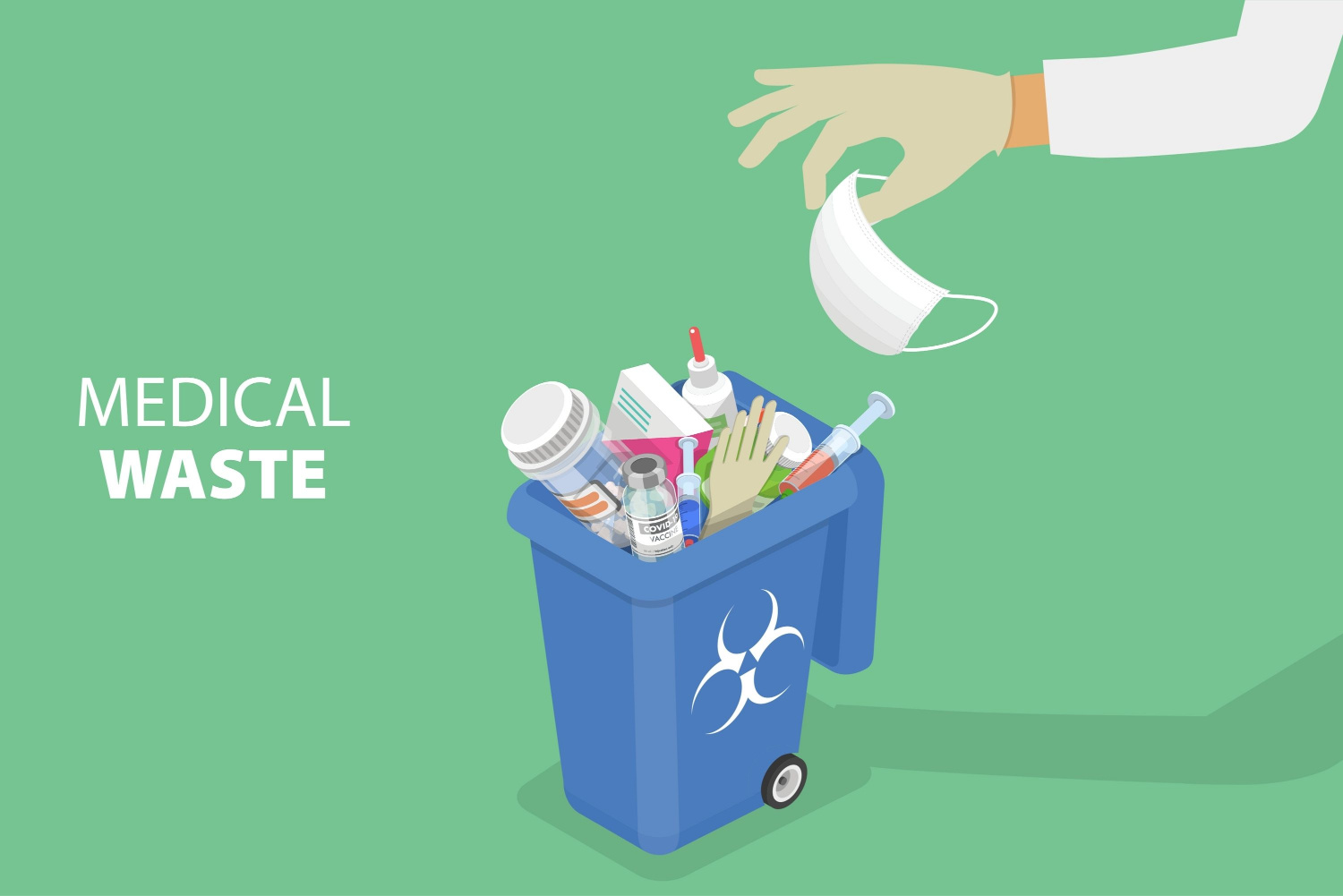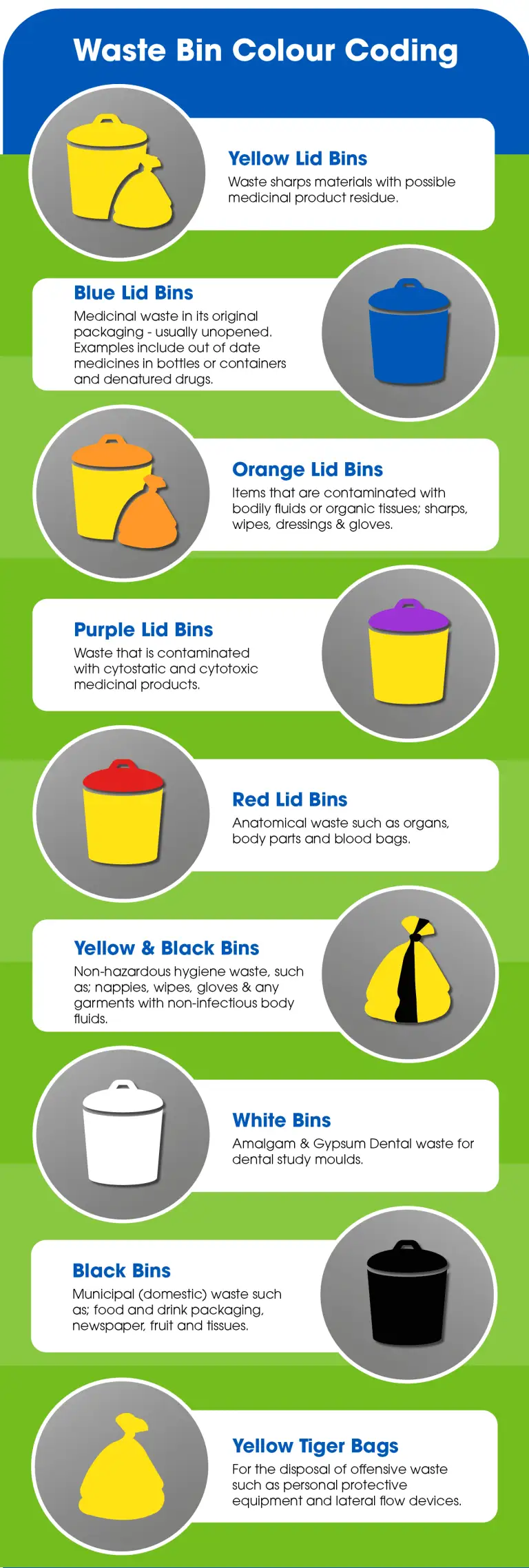Compliance and Rules for Medical Garbage Disposal
Compliance and laws for clinical waste disposal play a crucial duty in making sure the safety and health of both health care professionals and the basic public. Proper monitoring of medical waste is vital to protect against the spread of infections, safeguard the environment, and preserve public health. This needs adherence to specific standards and protocols stated by regulatory companies and bodies. These regulations include various elements, including the classification and partition of medical waste, correct storage and managing treatments, in addition to transport and disposal methods. By complying with these regulations, health care centers can reduce the threat of contamination and potential damage to people and the environment. This post will certainly explore the value of conformity and provide an introduction of the vital regulations regulating clinical waste disposal.
Relevance of Conformity
The value of conformity with regulations for clinical waste disposal can not be overemphasized. Correct disposal of clinical waste is critical for ensuring the safety and well-being of medical care employees, people, and the basic public. Clinical waste, that includes products such as utilized needles, contaminated gloves, and biomedical waste, can pose serious wellness threats otherwise dealt with and thrown away appropriately.
Compliance with policies ensures that clinical waste is handled in a method that minimizes the potential for direct exposure to contagious diseases and harmful materials - medical waste disposal. It helps protect against the spread of infections, such as HIV, liver disease B and C, and other bloodborne virus. Compliance also plays a crucial role in shielding the atmosphere by preventing contamination of water resources, soil, and air
Failing to abide by regulations can cause severe effects for healthcare centers, including penalties, lawsuit, and damage to their track record. Additionally, non-compliance might compromise the health and wellness of medical care workers, individuals, and the community.
Conformity with regulations for medical garbage disposal requires adherence to certain standards and procedures. These might consist of proper partition, product packaging, labeling, and storage of clinical waste. It additionally involves utilizing accepted disposal techniques, such as autoclaving, landfilling, or incineration, relying on the type of waste.
Regulative Agencies and Bodies
Governing firms and bodies play an important duty in overseeing compliance with policies for clinical garbage disposal. These companies are responsible for setting standards, guidelines, and procedures to guarantee the appropriate and safe handling of clinical waste. They implement and monitor conformity to shield public health and the setting.
One of the most noticeable governing agencies in the United States is the Epa (EPA) The EPA is in charge of regulating the storage, transportation, treatment, and disposal of medical waste. They establish guidelines for waste generators, carriers, and treatment facilities to follow, making certain that all necessary precautions are required to stop the spread of diseases and contamination.
Another important governing body is the Occupational Safety And Security and Health And Wellness Administration (OSHA) OSHA establishes standards and regulations to protect employees from job-related hazards, including those relevant to clinical waste. WasteX Medical Waste Disposal. They provide standards for the risk-free handling and disposal of medical waste to protect staff members in healthcare centers
In enhancement to these government agencies, specific states likewise have their own governing bodies that supervise clinical garbage disposal. These companies might have their own details laws and requirements that should be followed.

Category and Segregation of Medical Waste
To guarantee proper monitoring of medical waste, it is necessary to identify and segregate it according to established guidelines and procedures. medical waste removal. Category and partition play an essential function in lessening the risk of infection, protecting the atmosphere, and making certain the security of medical care employees and the public
Medical waste is classified into different groups based upon its possible risk level. These classifications consist of transmittable waste, pathological waste, sharps waste, pharmaceutical waste, chemical waste, and contaminated waste. Each category needs details handling, storage space, disposal, and transport techniques to reduce the danger of exposure and contamination.
Segregation of clinical waste includes separating different types of waste at the source. This procedure ensures that waste with various risk degrees is not combined, lowering the possibility for cross-contamination and making disposal procedures much more reliable. Appropriate segregation is accomplished with the use of color-coded tags and containers, which help healthcare employees and waste management employees recognize and take care of each type of waste appropriately.
In addition to classification and segregation, medical care facilities have to additionally stick to local, state, and federal laws pertaining to clinical waste monitoring. These guidelines describe specific requirements for storage space, transportation, therapy, and final disposal of clinical waste, making sure conformity web and maintaining public wellness and safety.
Correct Storage Space and Taking Care Of Treatments
Appropriate storage and dealing with procedures play a crucial duty in ensuring the risk-free and certified administration of medical waste. Medical waste, that includes items such as made use of syringes, polluted gloves, and ran out medications, can present significant health and ecological dangers if not managed correctly. It is essential for health care facilities and other generators of clinical waste to apply stringent storage and handling procedures.
To begin with, clinical waste needs to be kept in long lasting, watertight containers that are especially developed for this objective. These containers ought to be identified with the global biohazard icon and the words "clinical waste" to plainly show the contents. Furthermore, the containers ought to be kept securely near stop any kind of possible leakage or splilling.
Moreover, it is essential to segregate various types of medical waste to prevent cross-contamination. Sharps, such as scalpels and needles, ought to be kept in puncture-resistant containers to lessen the danger of injuries - WasteX Medical Waste Disposal. Chemical waste, such as solvents and disinfectants, should be stored individually from other types of clinical waste to stop hazardous exposures or chemical responses

Transportation and Disposal Techniques
Healthcare facilities have to ensure the safe transport and correct disposal of their clinical waste to comply with guidelines and safeguard public health and wellness. Transport and disposal techniques play a crucial function in preventing the spread of contagious illness and lessening the ecological effect of clinical waste.
To carry clinical waste, health care facilities should make use of leak-proof and puncture-resistant containers that are identified with the biohazard symbol. These containers ought to be securely sealed to stop any leak throughout transportation. In addition, healthcare facilities should develop procedures for the transport procedure, consisting of the use of experienced employees and committed vehicles.
As soon as the medical waste reaches the disposal facility, it undergoes various methods of treatment. One common technique is incineration, which involves burning the waste at high temperature levels to damage microorganisms and decrease the volume of waste. One more method is autoclaving, which makes use of vapor and pressure to sterilize the waste. After treatment, the waste is generally sent out to a landfill or a waste-to-energy facility for final disposal.
It is vital for health care centers to deal with accredited and allowed waste administration firms to ensure correct transportation and disposal of medical waste. These business have the know-how and sources to handle clinical waste safely and in compliance with laws.
Conclusion
In final thought, compliance with policies for medical waste disposal is of utmost value to guarantee public wellness and security. Generally, adherence to conformity and guidelines is necessary to properly take care of medical waste.
Clinical waste, which includes items such as made use of needles, contaminated handwear covers, and biomedical waste, can position severe health and wellness risks if not taken care of and disposed of properly.
These categories include infectious waste, pathological waste, sharps waste, pharmaceutical waste, chemical waste, and radioactive waste.Partition of clinical waste involves separating various types of waste at the source. Appropriate segregation is attained with the usage of color-coded containers and tags, which help medical care workers and waste administration employees take care of each kind and recognize of waste appropriately.
Chemical waste, such as disinfectants and solvents, should be stored individually from other types of medical waste to stop chemical reactions or harmful exposures.